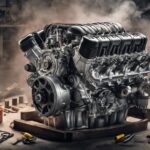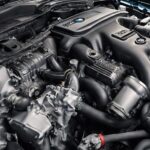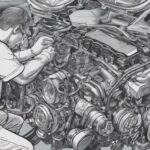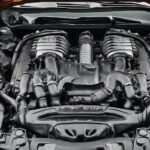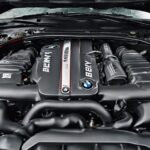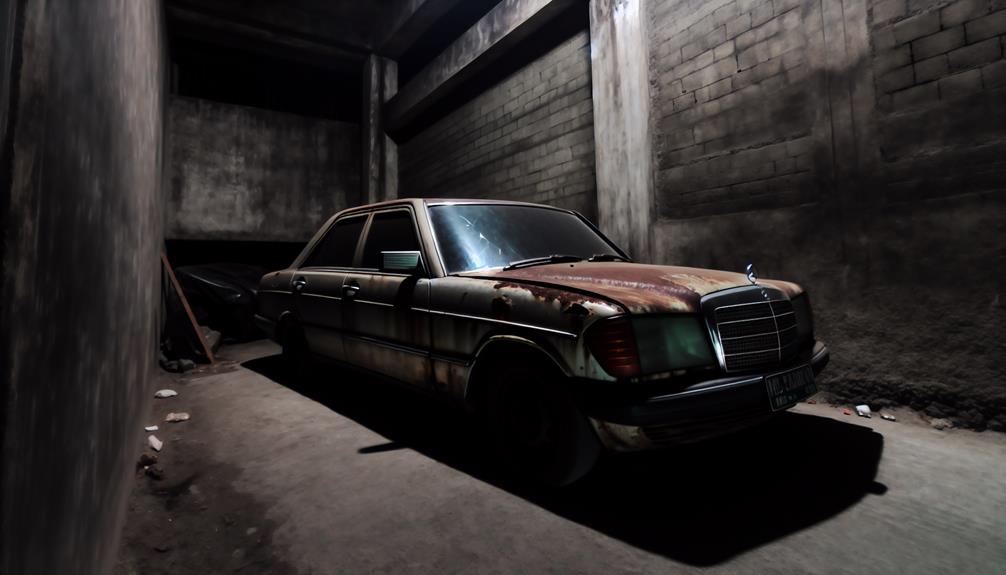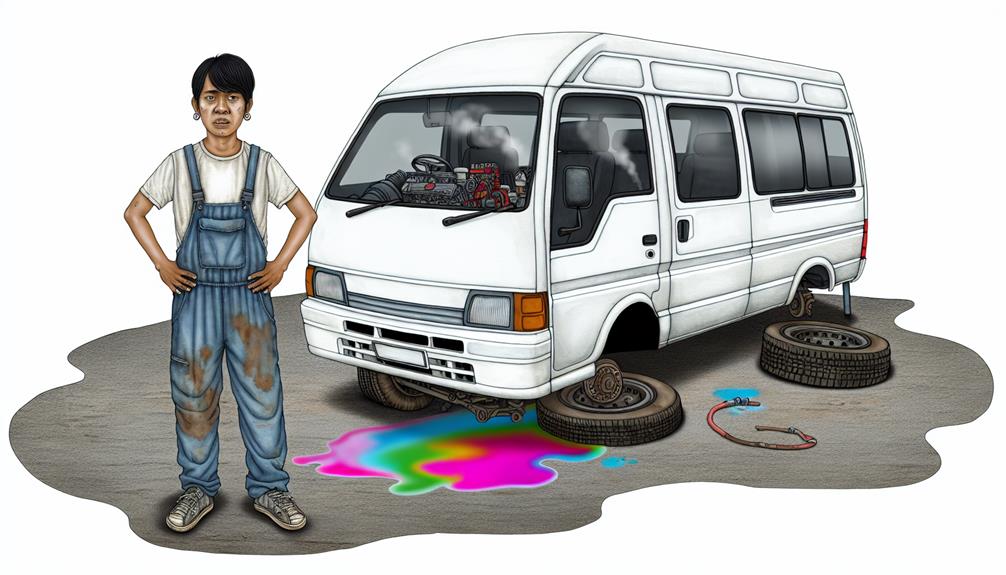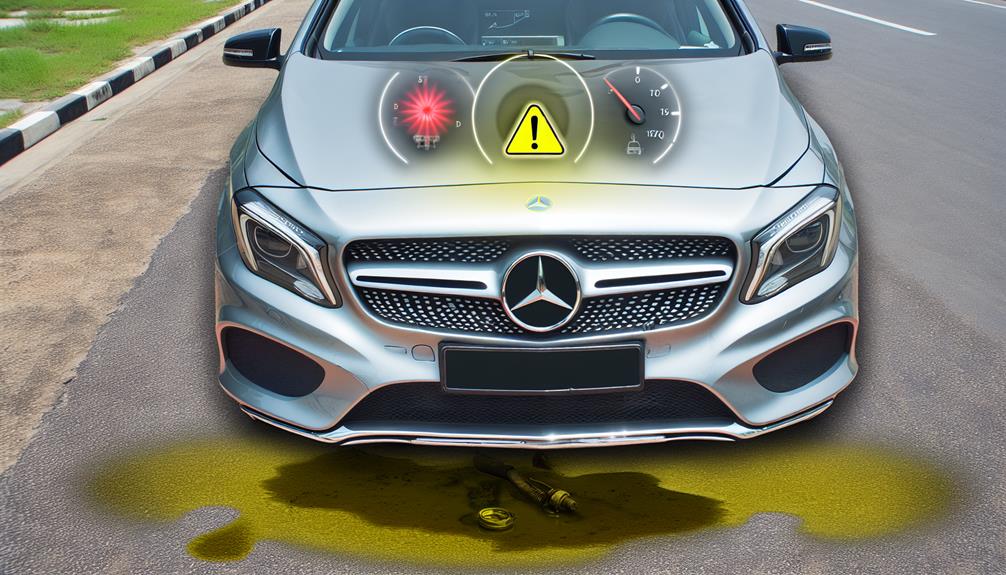Avoid the Mercedes A-Class models from 1997 to 2004. These years are notorious for transmission issues, frequent maintenance headaches, high repair bills, pesky electrical problems, and engine trouble. You might want to steer clear of these troubled waters if you're in the market for a reliable ride.
Key Takeaways
- Avoid Mercedes A-Class years 1997-2004.
- Notorious for transmission issues.
- High repair costs and electrical problems.
- Engine components prone to failures.
- Owners face frequent maintenance challenges.
Problematic 1997-2004 Mercedes A-Class
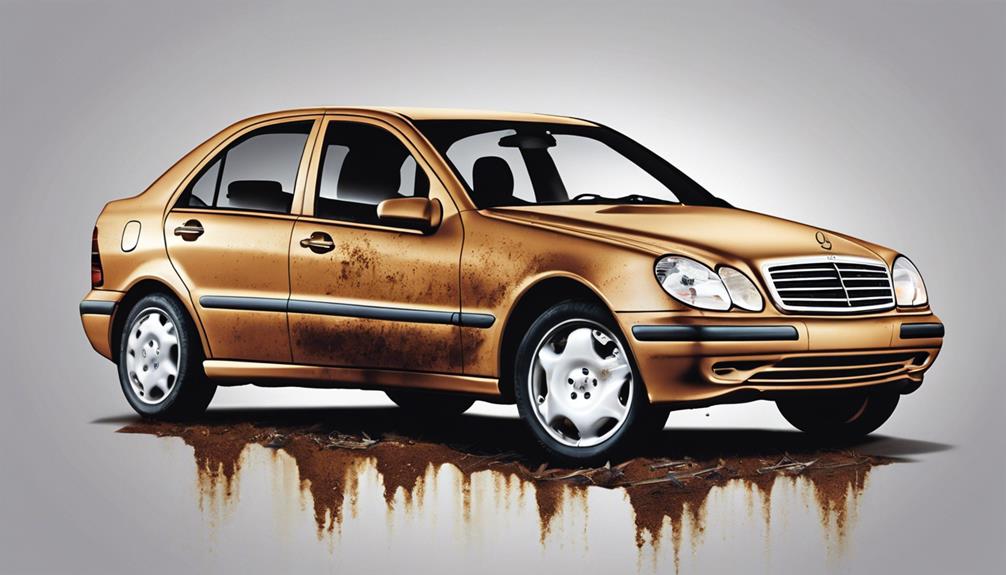
The 1997-2004 Mercedes A-Class, notorious for its problematic transmission, leaves owners grappling with frequent maintenance issues and high repair costs. Electrical issues and common problems plague these models, making ownership a costly affair. The transmission failure in these vehicles is a well-documented headache for many drivers, requiring expensive repairs and causing immense frustration. Engine components are also not exempt from issues, adding to the laundry list of problems faced by owners of these Mercedes A-Class variants.
The electrical gremlins in these cars can be particularly vexing, causing unpredictable failures and requiring meticulous troubleshooting. When it comes to engine components, frequent failures can lead to unexpected breakdowns and costly repairs. Dealing with these issues can be a real test of patience and wallet, as the repairs often come with a hefty price tag. So, if you're considering a 1997-2004 Mercedes A-Class, be prepared for a bumpy ride filled with maintenance woes.
Trouble-prone 2015 Mercedes C-Class
Traversing the tumultuous terrain of the 2015 Mercedes C-Class requires a keen eye for potential pitfalls and a sturdy wallet for unexpected repairs. This model year has gained notoriety for its engine problems and electrical issues, making it a risky venture for the unprepared.
From faulty Airmatic suspension setups to troublesome fuel system components, the 2015 C-Class has left many owners feeling the strain of constant maintenance. Reports of powertrain complaints further muddy the waters, highlighting the challenges that come with owning this particular Mercedes iteration.
The engine woes and electrical gremlins that plague this model have been a source of frustration for many drivers, adding complexity to an already intricate driving experience. If you're considering delving into the world of the 2015 Mercedes C-Class, be ready to confront these potential obstacles head-on and with a healthy dose of caution.
Reliability Concerns: 1996-2002 Mercedes E-Class
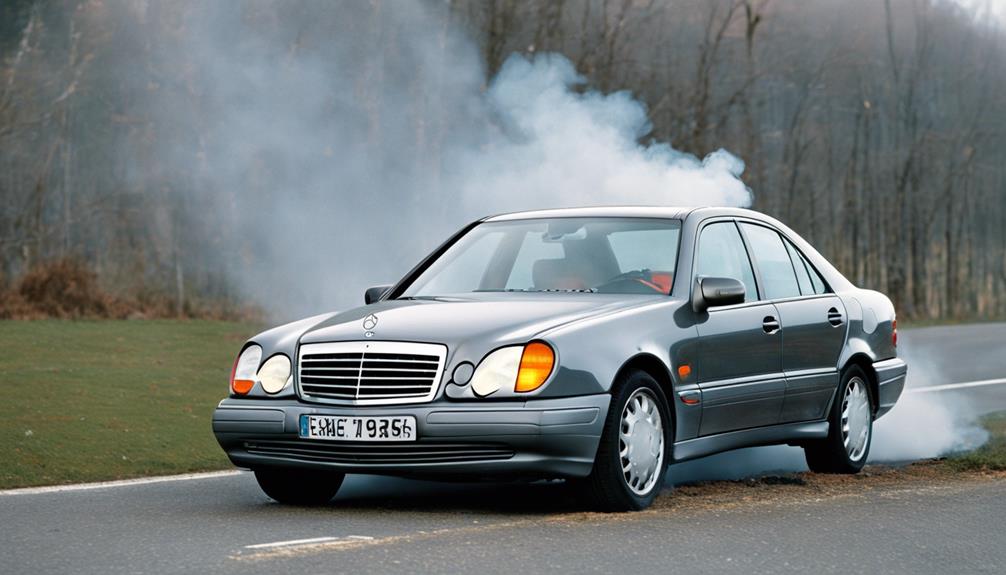
Traversing the minefield of reliability concerns surrounding the 1996-2002 Mercedes E-Class demands a cautious approach and a discerning eye for potential pitfalls. When delving into the domain of Mercedes Benz's older E-Class models, be prepared to encounter some common issues:
- Body Rusting Problems: The 1996-2002 E-Class (W210) is highly susceptible to body rusting, which can greatly impact the car's reliability.
- Electrical System Nightmares: Severe electrical malfunctions plague these models, making them notorious for their low-quality construction.
- Subpar Component Quality: Inferior parts used in the 1996-2002 E-Class lead to frequent maintenance and repair requirements.
- Recall and Complaint Galore: These Mercedes E-Class variants have a history of numerous recalls and customer complaints due to various issues.
- Exercise Caution: Potential buyers should tread carefully when considering the 1996-2002 Mercedes E-Class due to their reliability concerns.
Navigating the intricate world of the 1996-2002 E-Class requires a keen eye and a willingness to tackle these prevalent challenges head-on.
Issues With 2003-2008 Mercedes E-Class
Traversing the maze of reliability concerns in the 2003-2008 Mercedes E-Class demands a sharp eye for potential pitfalls that could rattle your driving experience. From faulty Airmatic suspension setups affecting ride quality to powertrain complaints causing transmission issues, these models had their fair share of troubles. Fuel system problems like leaks and pump failures were also common, adding to the list of headaches. However, the cherry on top was the severe electrical issues that plagued these vehicles, with sensors and wiring problems causing untold frustration for owners. It's like a never-ending saga of troubles waiting to unfold every time you hit the road in one of these E-Class models.
| Category | Issues |
|---|---|
| Electrical Issues | Malfunctioning sensors, wiring problems |
| Transmission Issues | Powertrain complaints, transmission problems |
| Fuel System Problems | Fuel leaks, fuel pump failures |
| Powertrain Complaints | Engine malfunctions, transmission issues |
Warning Signs: 2014 Mercedes E-Class
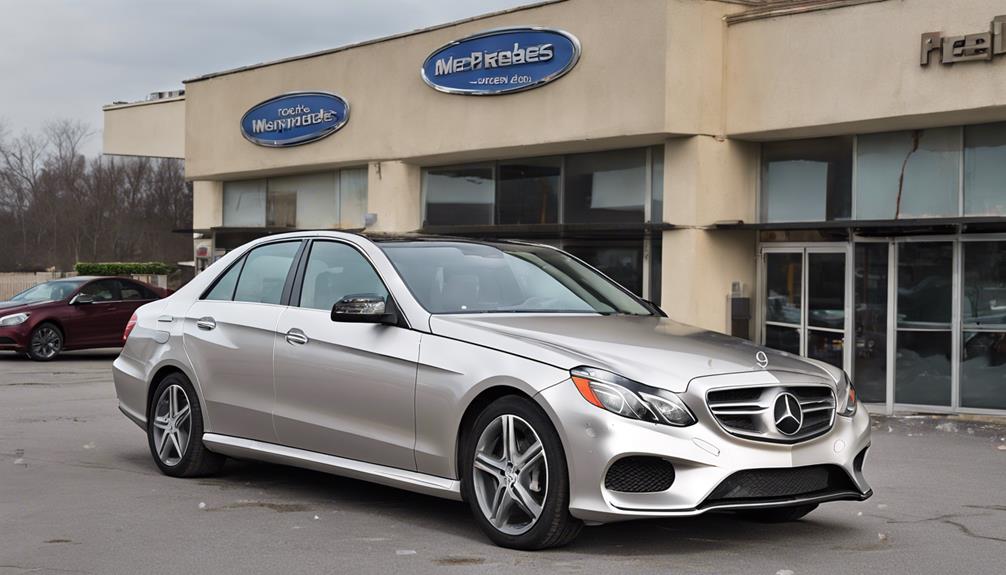
When embarking on a journey with the 2014 Mercedes E-Class, keep a keen eye out for warning signs that may hint at potential issues lurking beneath the sleek exterior. Here are some common red flags to watch out for:
- Oil leaks onto hot engines: Keep an eye out for any signs of oil leakage under the hood.
- Rubber seals near exhaust system: Check for any melting or damage to rubber seals that could lead to issues.
- Prone to exploding airbags: Be cautious and verify the airbag system is functioning correctly.
- Powertrain and electrical issues: Stay alert for any unusual noises or dashboard warning lights.
- Safety and reliability concerns: Stay informed about any recalls or common problems reported by other owners.
Being aware of these warning signs can help you navigate potential issues with the 2014 Mercedes E-Class, ensuring a smoother journey ahead.
Red Flags: 2006 Mercedes M-Class
If you're eyeing a 2006 Mercedes M-Class, be wary of its track record for brake failures and powertrain woes.
The crankshaft and camshaft malfunctions, along with dodgy door locks and ABS glitches, can make for a costly headache.
Safety concerns and high maintenance costs should give you pause before considering this model.
Known Mechanical Issues
Beware of the 2006 Mercedes M-Class, as it's notorious for a range of mechanical issues, including brake failures and powertrain problems. When considering this car, watch out for:
- Highly prone brake failure issues.
- Common powertrain problems.
- Malfunctions in the crankshaft and camshaft.
- Recurring faulty door locks.
- Power steering failures and ABS malfunctions.
The 2006 Mercedes M-Class might seem like a sleek ride, but these underlying issues could lead to a bumpy road ahead. Keep an eye out for warning signs and consider your options carefully before investing in this model.
High Maintenance Costs
Steer clear of the 2006 Mercedes M-Class if you're not prepared for the hefty maintenance costs that come with its notorious mechanical issues. From power steering failures to ABS malfunctioning and faulty door locks, this model is a money pit waiting to happen. Here's a breakdown of the high maintenance costs you might face:
| Red Flags | Description | Cost |
|---|---|---|
| Power Steering Failures | Frequent occurrence leading to expensive repairs | $1000 – $1500 |
| ABS Malfunctioning | Contributes to the reputation for requiring costly maintenance | $800 – $1200 |
| Faulty Door Locks | Notorious issue adding to the overall high maintenance expenses for owners | $500 – $800 |
Make a wise choice to avoid draining your wallet on maintenance with the 2006 Mercedes M-Class.
Safety Concerns
When considering the 2006 Mercedes M-Class, be aware of the safety concerns tied to brake failure, powertrain issues, power steering malfunctions, ABS problems, and door lock faults.
- Brake failure: A major red flag that compromises your safety on the road.
- Powertrain problems: Issues that can disrupt your driving experience and safety.
- Power steering malfunctions: Posing risks of accidents and loss of control.
- ABS issues: Contributing to potential braking system failures and safety hazards.
- Door lock faults: Security concerns that put both drivers and passengers at risk.
Take notice of these warning signs to guarantee your safety and peace of mind while driving the 2006 Mercedes M-Class.
Caution: 2007 Mercedes S550
Watch out for the 2007 Mercedes S550; it's not all luxury and smooth rides. Engine reliability concerns and common electrical issues plague this model, potentially causing significant maintenance headaches.
When considering a luxury vehicle, be sure to steer clear of the pitfalls that come with the 2007 Mercedes S550.
Engine Reliability Concerns
Amidst the allure of the 2007 Mercedes S550 lies an important tale of engine reliability concerns. The car comes with an average yearly maintenance cost of $1,344 and has a propensity for issues such as engine and transmission failure. Here's a closer look at what to watch out for:
- Premature wearing of the timing chain gear
- Potential engine damage due to the timing chain gear issues
- Active Body Control malfunctions to keep an eye on
- Cumbersome replacement process for the timing chain gear
- The financial burden associated with engine repairs
Considering these factors, it's essential to proceed with caution when venturing into the domain of the 2007 Mercedes S550 to avoid being caught off guard by these potential engine woes.
Common Electrical Issues
Exploring the realm of the 2007 Mercedes S550, one must be cautious of the prevalent typical electrical issues that can pose significant challenges and expenses. When it comes to wear and tear on the starter motor, the 2007 S550 tends to experience premature failure, leading to frustrating instances of the loss of power. Additionally, the manual gearbox in this model is prone to electrical malfunctions, causing interruptions in the driving experience. These issues not only impact the performance of the vehicle but also result in costly repairs. Addressing electrical concerns promptly can prevent further damage and guarantee a smoother driving experience. Stay vigilant to avoid unexpected setbacks with your 2007 Mercedes S550.
| Common Electrical Issues | Effects |
|---|---|
| Premature starter motor wear and tear | Loss of power |
| Manual gearbox malfunctions | Disruption in driving experience |
Frequently Asked Questions
Is Mercedes a Class a Reliable Car?
Yes, Mercedes A-Class can be dependable. Regular maintenance, research on specific years, and avoiding known problematic models like the 2015 version with Airmatic suspension and fuel system issues can help guarantee a more reliable experience.
Which Is the Best Mercedes a Class Model?
When choosing the best Mercedes A-Class model, consider performance, features, reliability, and budget. Research reviews and expert opinions, test drive different models, and prioritize your preferences. Find the perfect fit for your lifestyle!
What Is the Most Common Problem With Mercedes a Class?
If you want to know the most common problem with Mercedes A-Class, lookout for driveshaft detachment. This issue, prevalent in pre-2013 models, can lead to power loss while driving. Quick fixes and maintenance are key!
Is It Worth It to Buy a Mercedes a Class?
When considering buying a Mercedes A-Class, it's worth it for the improved fuel economy and advanced safety features. Opt for newer models to avoid common issues like electrics, rust, and mechanical problems. A wise investment awaits you.
Conclusion
So, if you're in the market for a Mercedes, be sure to steer clear of these trouble-prone models. From the problematic 1997-2004 A-Class to the warning signs of the 2014 E-Class, these cars have a history of reliability concerns.
Don't let the allure of luxury blind you to potential headaches down the road. Stay informed and choose wisely when it comes to avoiding these years of Mercedes models.
